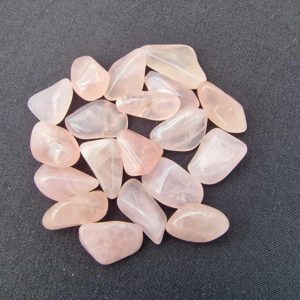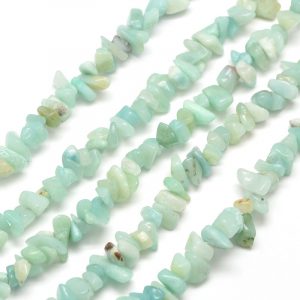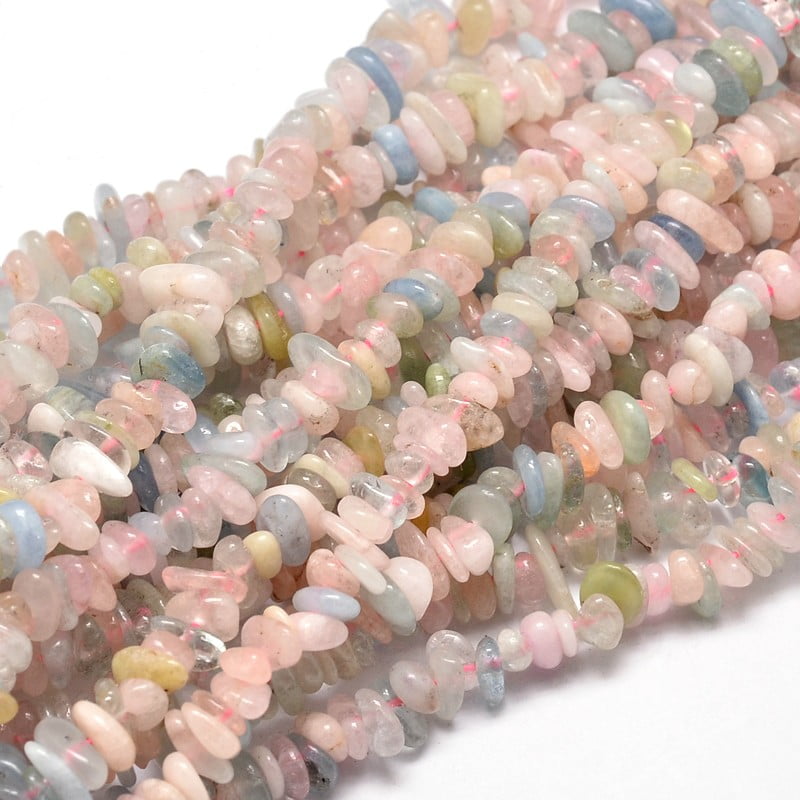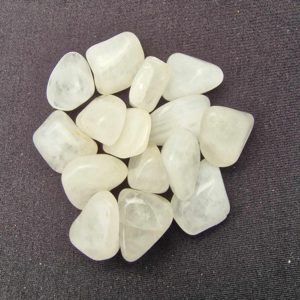This blog covers semi-precious stones and how you can make jewellery with these beautiful minerals. You can find a wide selection of them available in store or online at Riverside Beads. They work really well within so many beading projects. Here’s some of the best beading stones…
Clear Quartz
Quartz is one of the most widespread minerals in the world, and as such can be found on every continent. The term “quartz” comes from the Greek word for ice, and ancient Greek philosophers believed that the stone was a form of permanent ice. They thought that it was so cold that it kept from thawing, therefore believing it had magical properties.
In the holistic world it is believed that Clear Quartz is a powerful protective, cleansing and energising stone. Because of its ability to fragment colour and light it is said to re-balance the body and re-align our chakras. It is thought so powerful that some believe it can be used to energise other crystals, while also channelling healing, energy and dispelling negativity.
To wear clear quartz within your jewellery is said to optimise general physical well being and in particular stimulate the thyroid and help with digestive problems There are claims that it is also helpful for chronic fatigue, arthritis, fibromyalgia, depression, bone injuries and aiding concentration.
Rose Quartz
Not surprisingly this is part of the Quartz family. This pink crystal has a light, opaque colouring and is often shaped into pretty rondelles and used in necklace and bracelet pieces. Wearing it close to your heart is favoured due to its supposed emotional healing properties and it is said to alleviate heartbreak and loneliness while offering inner peace and self-love.

Designer jewellery makers Lola Rose use Rose Quartz to make their big statement necklaces, often featuring a large heart shaped pendant made of the stone. You can make your own for a fraction of the price using our fantastic super strong Beading wire and Rose Quartz rondelles.
Coral
Coral is a very important and unique gemstone which is also known as Moonga or Praval. It derives from coral polyps which live in the depths of the sea bed, usually in quiet waters. When these tiny invertebrates die the skeletal remains form a calcareous deposit and this is what we know as red coral.
Due to its intense red colour, followers of Indian Vedic Astrology believe that it represents the planet of Mars, regarded as a symbol of energy, ambition and vitality.
It is believed that because the Coral represents Mars, which is considered the god of warfare, it provides courage to the wearer and promotes the energy and strength to conquer ones fears and daily challenges. It’s also said to dispel lethargy and boost activity and logic.
As well as all that some people think that if you wear it on a daily basis it helps with the healing of skin disorders such as acne and facial eruptions, plus defending against cuts, bruises, wounds and other injuries.
Turquoise
This is a hard, opaque mineral that is a hydrated phosphate of copper and aluminium. It first came to Europe in the 17th century, from the mines of Khorasan Province, in Persia. Because the stones were travelled via Turkey at this time they became known as ‘Turquois’, the French word for Turkish. However, since the discovery of Tutankhamen’s tomb we have since realised that the mineral was used long before then, with precious turquoise pieces having been found to be in-laid in many of the artefacts found, including the Pharos mask.
Fine grades of the stone continue to be prized and can be quite valuable, but the introduction of treatments, imitations and synthetics has meant that the everyday jewellery maker can use low cost versions to amazing effect. A dyed Howlite stone for example is an excellent substitute for real turquoise and you can tell these pieces apart by their beautiful vibrant blue colour.
There isn’t much that Turquoise isn’t said to aid. It’s supposed to be a real overall healer, helping in the absorption of nutrients, enhancing the immune system and stimulating the regeneration of tissue. It’s believed to have anti-inflammatory and detoxifying effects, and alleviate cramps and pain. Sore throats, eyes, overacidity, rheumatism, gout, stomach problems, viral infections, breathing, the list goes on and on! I myself find it a very calming stone to wear and I love coupling it with red coral and sometimes even freshwater pearls.
Jade
Jade is a mineral that derives from the pre-historic era. It was popular in Ancient Asia when it was used in the production of many hand carved artefacts, amongst others.
It wasn’t until the 19th century that a French mineralogist determined that Jade was actually two different minerals, Jadeite and Nephrite. Both green in colour Jadeite has about the same hardness as quartz, while Nephrite is slightly softer but more resistant to breakages. The translucent Jadeite is the rarer and therefore most precious of the two minerals, having been found in only 12 locations worldwide.
Chinese cultures believe that we all have what’s known as ‘Qi’, our life force, of which is said to be stimulated by wearing or keeping Jade close at hand. This is one reason for the widespread use of Jade for items ranging from jewellery to bookmarks and key rings.
Jade stones also have the ability to radiate infrared heat and you can find some treatments available today which use Jade to treat back pain and other muscular problems.
Holistic gurus believe that the stones aid detoxification by strengthening the body’s filtration and cleansing systems, while also boosting the immune system. It is also said to help the heart, lungs and thymus.
It is important to note that with all of the health benefits listed in this blog, there is little or no “real” proof for these healing properties, however if wearing crystals and stones has a positive effect on your body/mind/soul then we recommend! You can see our full range of semi-precious beads both in store or check out the selection online by clicking here.




